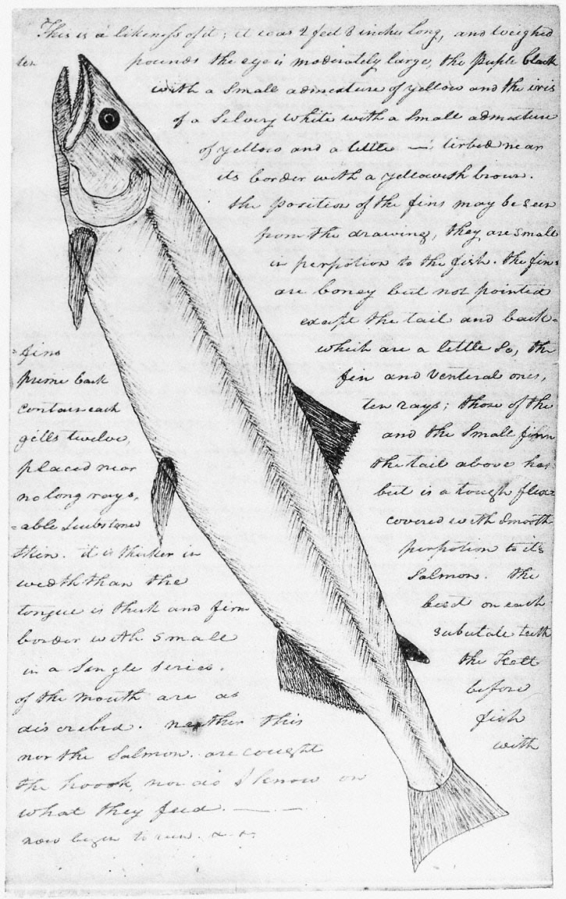Writing with a quill pen, Meriwether Lewis entered in his journal on Feb. 24, 1806, that a Clatsop chief came to trade. The chief also brought some small fish that were running in the Columbia River tributaries. Lewis sketched the fish life-sized in his journal and made entries surrounding it. At the time he wrote about the fish, their enormous spawning runs ranged from Northern California to Alaska. The lower Columbia River saw, at one time, extensive runs.
The drawing of eulachon or smelt was as accurate as he could make it, wrote Lewis. When dried, the 6- to 9-inch-long silver fish remains greasy and could be burned to light the night, earning it the name candlefish. Some scholars believe the word “eulachon” is the source of “Oregon,” possibly misheard by Europeans learning of the riches of the rivers from Native people.
Lewis was the first to document the eulachon. He wrote that he enjoyed them “Indian style,” where several were skewered on a wood spit and roasted over a fire without any other preparation. Its oil is a potent source of vitamins E and K and contains healthy fatty acids. A tablespoon of the oil contains 125 calories, and 5 ounces yields half the daily energy needed for an adult.
The slender eulachon swim in from the Pacific Ocean to spawn in freshwater rivers, generally in mid-February and early March. In the past, millions ran in the Columbia River, flooding its Southwest Washington tributaries, like the Cowlitz and Lewis rivers, as well as Oregon’s Sandy River. Standing on the riverbank, fishermen with dip nets scooped them up, sometimes filling their nets in a single pass.
The fish lives three to five years and spawns at the tail end of winter when Indigenous tribes’ food supplies were often low. In lean years, Natives living along the lower Columbia River relied on the eulachon run to carry them over until spring, calling them the “salvation fish.” In the Pacific Northwest, many Native tribes eat eulachon and incorporate them into social and ceremonial customs today.
In the 1990s, the runs declined. In 1993, no eulachon swam up the Cowlitz River. Theories as to why bounced around — climate change, warming waters, toxins, commercial overfishing — but no one knew for sure. Still, the Columbia River spawns fell a steep 98 percent.
Because eulachon spawning goes through boom-and-bust cycles, few were worried, believing the fish would rebound again. When they didn’t, Indigenous people were the first to recognize the drop and began asking questions.
Their questions turned to demands for action. In 2010, the Pacific eulachon were listed as threatened under the Endangered Species Act. While today’s smelt runs still contain millions of fish, they can rarely support recreational fishing.
The Washington Department of Fish and Wildlife fishery managers monitor smelt runs yearly to determine whether to permit recreational dip netting. Smelt fishing was on hold for several years but resumed on the Cowlitz River in 2020 and 2021. Smelt season is short, often just a day. The last local dip netting run was on March 5, 2022. It offered a brief peek into the area’s fishing history.
Martin Middlewood is editor of the Clark County Historical Society Annual. Reach him at ClarkCoHist@gmail.com.



